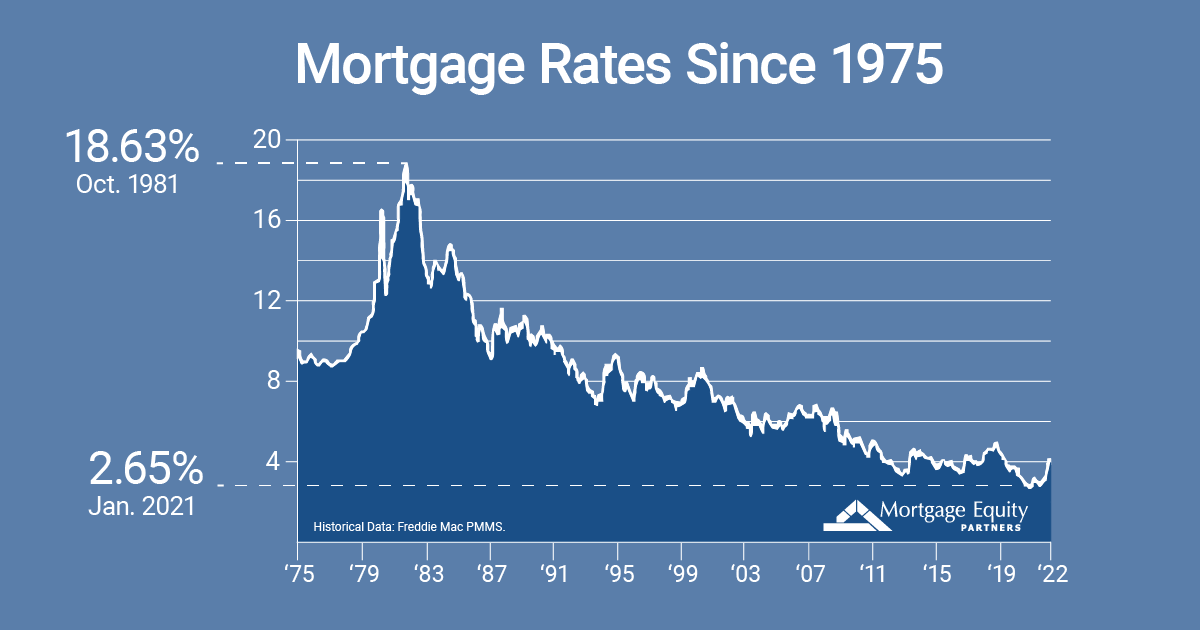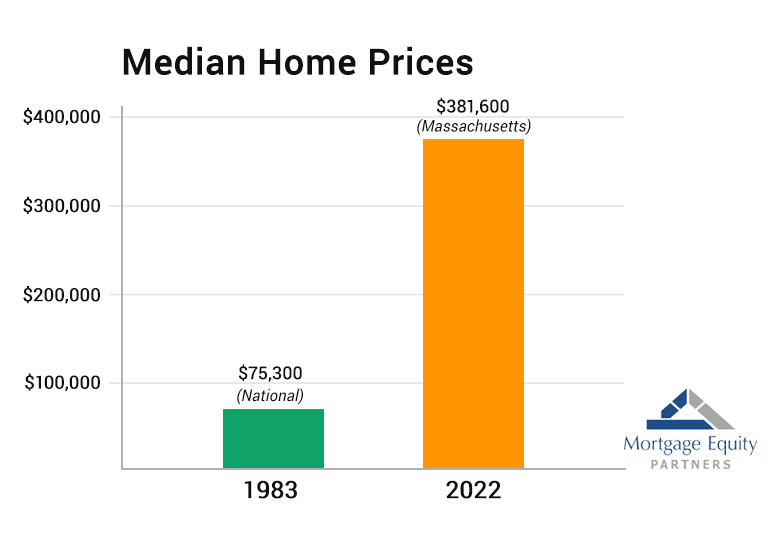
High home prices and rising mortgage rates have become a source of frustration for homebuyers, especially first-time homebuyers trying to enter the housing market. However, if first-time homebuyers compare home prices and rates to what previous generations paid, they may be shocked by what they learn. Decades ago, the average home price was a fraction of what it is today, and the interest rate was more than triple.
In all areas of the country, houses are much more expensive today than 40 years ago; however, the average mortgage interest rate in 1983 was 18.63%.* That means that it cost a lot more to borrow money back then than it does today.
When people get frustrated with an interest rate in the 5’s, they must understand that it is still a fantastic interest rate. For example, in the early 1980s, rates around 15% on a 30-year fixed-rate mortgage were not uncommon. However, if you look at historical housing data, you can see that rates have been on a downward trend since then.
Over the past several years, we have gotten accustomed to expecting rates in the 2 – 3% range. Most new homeowners and those entering the housing market have not experienced high-interest rates in their adult lifetimes.
The super-low interest rates were part of the reason demand for homes skyrocketed. However, it isn’t only about the low rates. The dream of homeownership is still alive and well. In fact, a recent report from the National Association of Realtors (NAR) finds that over 86% of buyers agree homeownership is still the American Dream. This strong desire for homeownership has also kept the demand for homes growing and home values appreciating.
Another recent factor contributing to increased demand for homes occurred during the pandemic when people were largely confined to their homes. A trend emerged that people wanted to buy a new bigger house with more features. Many trending blogs focused on what homeowners were looking for in a new home. People were looking for more space, a home gym, and work from home office space. Many homebuyers wanted a bigger yard and more outdoor living space and moving out of the cities was a huge trend. Many younger people living in urban areas decided to move to the suburbs and take the leap to become a homeowner instead of continuing to rent. Also, during the pandemic, building new homes slowed down significantly, and it became challenging to get building supplies. Those factors all had a significant impact on home inventory.
Interestingly, a monthly housing sentiment survey in April 2022 from Fannie Mae found that 73% of respondents said it’s a bad time to buy a home. The housing market is seasonal, with the home buying and selling season beginning in earnest now in most areas of the country. Homeowners still generally try to wait to move until the end of the school year, and when the weather is more favorable to do so, and timing is less disruptive to school schedules.
Many lenders are trying to offer programs to make the rate increase easier to accept. Adjustable-rate mortgages are being talked about again. In 2014, surging mortgage rates led to a sharp increase in the use of adjustable-rate mortgages. Rising mortgage rates and falling affordability spurred an interest in AMRs because they helped boost purchasing power by lowering monthly mortgage payments. Could this happen again as rates continue to rise?
What else can homebuyers do in this uncertain market to protect themselves against rate increases?
Mortgage Equity Partners offers a lock to shop program designed for a rate increase environment. Our lock to shop program will give you peace of mind by locking in your rate before locating your new home. Lock to shop protects you from market rate increases as you shop. The program also provides you with a fully underwritten loan commitment that makes you a more competitive buyer, and the loan process will be more straightforward when you officially apply. In addition, if the rate has dropped during your home search, you will have a one-time option to modify to the lower rate for a nominal fee. Contact one of our experienced loan officers in your area to learn more.
The National Housing Survey also stated that 69% percent of respondents believe the mortgage rates will go up over the next 12 months. So perhaps this could be the impetus many potential buyers need to get out there and buy before rates go higher and home values increase. In any case, keep in mind that at one point in time, not so long ago, mortgage rates were in the 18s.
Sources:





